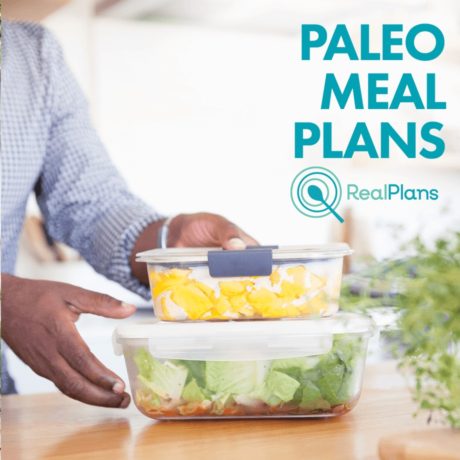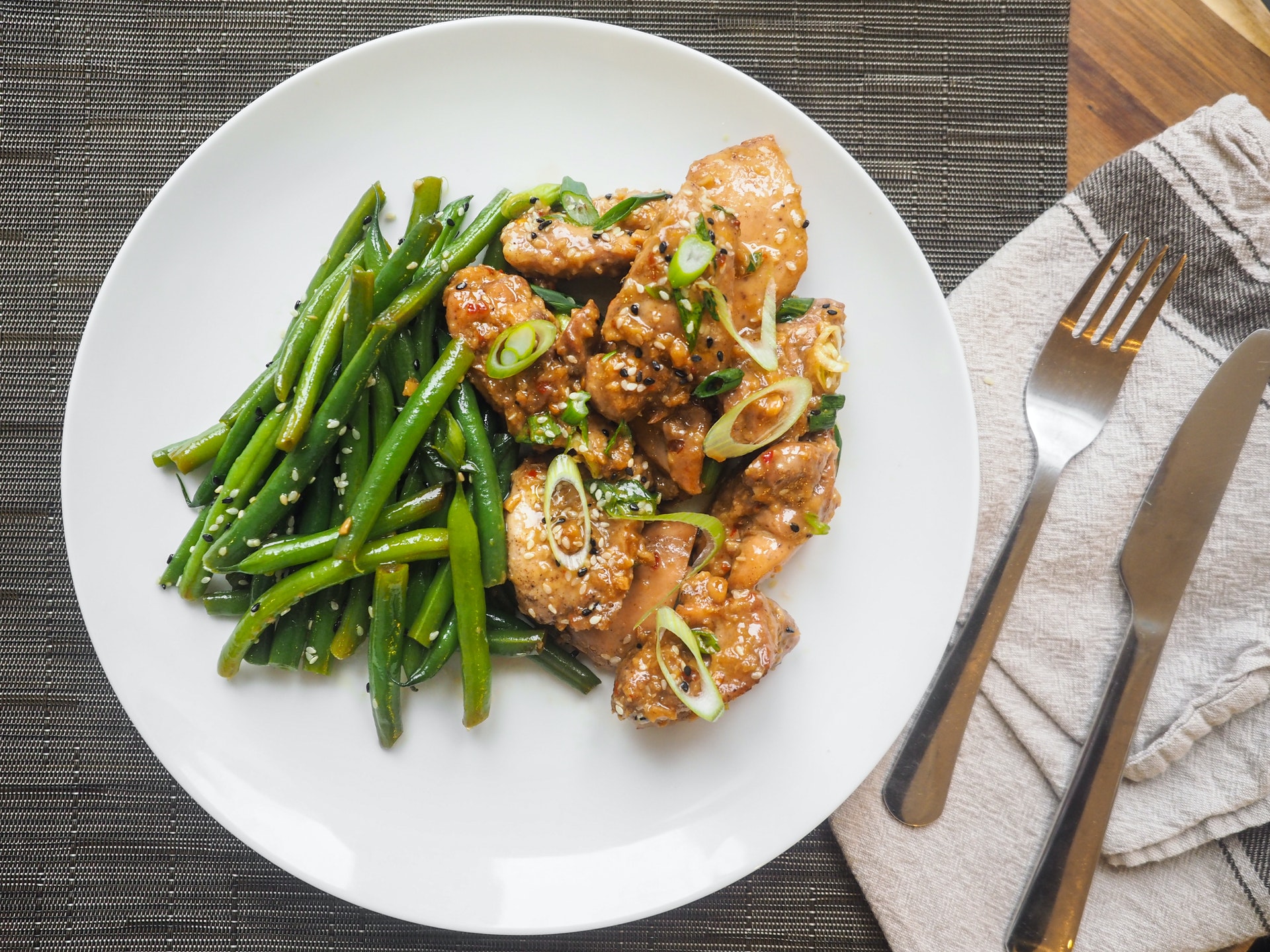I earn a small commission via affilate links at no extra cost to you.
If you’re reading this there’s a good chance you’re paleo curious. No worries. I’m a primal health coach and I’m here to help. Just like yourself I too was once a paleo beginner. There are 2 kinds of people in this world. Some can read a paleo book or look at a list of approved paleo foods and they’re off to the races, they don’t need any help. For others the task seems overwhelming. They’ll begin to wonder if they can do it. Is it as hard as these articles say? What if I don’t want to give up everything at once? Can I gradually go paleo? Yes. You can gradually transition to a paleo lifestyle. This is part 1 of my series: The Paleo Diet For Beginners.
I will caution that if you have blood sugar issues or are taking prescriptions that a gradual approach is what I’d recommend. Insulin is the master hormone and the paleo lifestyle is much lower in carbohydrates so there will be less insulin produced by the body. For this reason it’s important to work with a physician who will work with you. Many people who adopt this lifestyle find that they can reduce and/or eliminate prescriptions.
What Is Paleo?
When people talk to me about paleo the first thing I ask them is what their food would look like if the supermarket didn’t exist. Imagine yourself living as a hunter gatherer. What would you eat? You’d eat what you could hunt and forage. Think of how much sugar you could find in the forest and compare that to how much you can find in any convenience store or supermarket. See the disconnect? We’re swimming in sugar and shelf stable foods loaded with chemicals. Fake food is easier to come by than real food. Paleo is simply learning to eat real food.
Sure you could farm some shelf stable crops, but did you know that the chronic diseases that plague society began with the agricultural revolution? Instead of dying from acute injuries and infections (both easily treatable today) we’ve made spending the last few decades of life tied to prescriptions, doctor visits, and ill health the norm.
Is Paleo Healthy?
Yes, there are nonsense articles out there that say paleo isn’t healthy or feasible. I’ve been doing it for years so I can personally debunk that myth. If you need physical proof I have a number of friends I can introduce you to who have changed their health with the paleo diet.
The paleo diet consists of: meat, fish, fowl, vegetables, nuts, seeds, healthy fats, eggs, and minimal fruit. Once you consistently eat the basics, real food, there are tweaks that can be made depending on your unique situation. Some find that they have issues with oxalates, nightshades, FODMAPS, or lectins. Others may decide to go keto or find that they naturally end up keto most days. For those with autoimmune issues some have success with autoimmune paleo whereas others do better with a carnivore approach. Those who love vegetables may take more of a Ketotarian approach. The ultimate first step is to simply get rid of the foods that all diets agree we shouldn’t eat -> the fake stuff.
What About The Articles That Say Paleo Isn’t Sustainable?
Why do these articles exist? If everyone ate paleo how much of the supermarket would never be purchased? 98%?? It isn’t in the interest of industry to tell people to eat foods they can hunt, raise, and grow themselves.
Then, when people get healthier from eating real food, as they often do, the pharmaceutical, insurance, and medical industries will lose customers too. Always follow the money. For further proof look at the countries that have universal health care, they don’t allow many of the ingredients that are in our food system. It doesn’t make sense to pay to insure people and feed them a bunch of chemicals.
Like myself, most people find themselves exploring the paleo lifestyle because they’re literally tired of being sick and tired. If you read enough paleo books, listen to podcasts, and talk to Primal Health Coaches you’ll discover that we all have a health story to tell that led us on our paleo journey.
Paleo for Beginners: Focus on New Foods
The first step is to focus on what you are adding. Focus on learning how to cook new dishes. Get excited about trying new foods and making new discoveries. One of my favorite aspects of eating paleo foods is that everything has so much flavor. When grains and legumes are removed and you’re left with meat and vegetables the starchy canvas disappears.
When you’re in the produce section of the supermarket buy a vegetable that you’ve never tried before. There isn’t a vegetable in the Idaho supermarket that I haven’t purchased. (Rutabagas, Parsnips, Turnips, Celery Root, Yellow Beets, Chioggia Beets, Collards, Mustard Greens, Kale, Bok Choy, and many others).
If you’ve never roasted a whole chicken give it a go. Try a cut of meat that you don’t normally purchase. You can ask the butcher or Google about cooking methods. The general rule of thumb is that meats with a lot of marbling (connective tissue, white strands running through it) require a longer cooking time to tenderize the meat and break down the connective tissue. The good news is that these are usually the cheapest cuts of meat and they’re perfect for cooking in a slow cooker while you’re at work all day. Think pot roast!
Paleo Recipe Sources:
- Nom Nom Paleo by Michelle Tam
- Well Fed by Mel Joulwan
- Against All Grain by Danielle Walker
- Best Paleo Cookbooks of 2020
on Amazon
Get a free week of recipes from my friends at Real Plans. They include a shopping list so that you only buy the quantities that you need. (No more rotting extra produce in the refrigerator.) A timeline is also included with reminders for things like pulling the chicken out of the freezer so you’re always prepared.

Paleo For Beginners: Remove The Things You Won’t Miss
-
Artificial Sweeteners
- Insulin is released when something sweet touches your tongue. Insulin drives glucose into cells but the glucose never arrives when you consume an artificial sweetener so the glucose that is present in the blood is ushered into cells and keeps body fat stored. (Body fat can’t be burned when insulin is high.) The body perceives a drop in blood glucose as a stress response so it triggers cravings for more carbohydrates.
- In a study where they bypassed the tongue with an artificial sweetener by giving it in a capsule form:
- Non-caloric artificial sweeteners increased glucose absorption 20% compared to placebo. Plasma glucose increased 24% compared to placebo.
- Habitual consumption of artificial sweeteners:
- artificial sweeteners could reduce the body’s control of blood sugar levels
- exaggerate postmeal glucose levels
- predispose a person to developing type 2 diabetes
- Habitual consumption of artificial sweeteners:
-
Polyunsaturated Oils
- Polunsaturated oils are also known as industrial seed oils. (Corn, Soy, Canola, Sunflower, Safflower, Cottonseed)
- Contribute to insulin resistance by oxidative stress to the liver
- Cellular damage at DNA level. Dr. Cate Shanahan, author of Deep Nutrition equates polyunsaturated oils with consuming radiation because they damage the DNA.
- Stiffer arterial function for 24 hours after 1 serving of fries
- Integrated into membranes of healthy fat cells
- Disrupted fat metabolism (weight that won’t go away)
-
Fructose
- Lipogenesis – fatty liver (non-alcoholic fatty liver disease)
- Study: Normal healthy subjects were overfed fructose.
- The production of new fat in the liver increased six fold accompanied by a 79% increase in plasma triglycerides.
- A measure of insulin resistance in the liver increased by 28%. After 6 days!
-
Artificial Colors
- “Artificial food dyes are made from petroleum and approved for use by the FDA to enhance the color of processed foods.” NPR.org
- “The three most widely used dyes, Red 40, Yellow 5, and Yellow 6, are contaminated with known carcinogens, says CSPI. Another dye, Red 3, has been acknowledged for years by the Food and Drug Administration to be a carcinogen, yet is still in the food supply.” CSPInet.org
- “Many Grocery Manufacturers Association members (like Pepsi, Kraft and General Mills) “have switched to natural colorings in their products in the U.K., where warning labels are required, but they’re not doing that here for the most part. That’s because no one’s making them do it, and switching would cost a lot of money.”” 100daysofrealfood.com
-
Artificial Flavors
- “The term artificial flavor or artificial flavoring means any substance, the function of which is to impart flavor, which is not derived from a spice, fruit or fruit juice, vegetable or vegetable juice, edible yeast, herb, bark, bud, root, leaf or similar plant material, meat, fish, poultry, eggs, dairy products, or fermentation products thereof.” FDA.gov
- “An artificial flavor must be comprised of one of the nearly 700 FDA-allowed flavoring chemicals or food additives categorized as “generally recognized as safe,” or any of 2000 other chemicals not directly regulated by FDA but sanctioned for use by an industry group, the Flavor and Extract Manufacturers Association of the United States.” EWG.org
- In other words, ingredients that comprise artificial flavors are chemicals that were not originally sourced from nature.
Paleo For Beginners: The Replacements
-
Sweeteners:
- Local Raw Honey
- best purchased from a farmer’s market because many sold in supermarkets contain corn syrup and/or high fructose corn syrup
- Real Maple Syrup
- the stuff produced by trees
- Coconut Palm Sugar
- low glycemic index
- Local Raw Honey
- I’m not a fan of stevia because it has hormonal properties and was once used as a contraceptive for both men and women!! WOW!
- In particular, one specific steviol glycoside, called stevioside, has been shown to have potent contraceptive properties in female rats, implying that stevia may have an impact on estrogen, progesterone or both. In another study, male rats fed stevia extracts showed a decrease in fertility, reduced testosterone levels and testicular atrophy, potentially attributable binding of steviol glycosides with an androgen receptor. Although no studies have been conducted evaluating the impact of stevia on fertility in humans, the stevia plant was traditionally used to control the fertility of women by the Guarani Indians in southern Brazil. – The Paleo Mom
-
Fats:
- Use what your great grandparents used:
- Lard
- Grass Fed Butter
- Duck Fat
- Tallow
- Avocado oil is the best replacement for the seed oils listed above.
- Olive oil is a great monounsaturated fat however there are a few rules. You don’t want to heat it because damages the oil and removes it’s beneficial health properties.
- Look for Olive oil from the USA, preferably first cold press. I like this one and it can be found in most supermarkets.
- Olive oil from other countries can sometimes be diluted with polyunsaturated oils listed in step 2.
- Use what your great grandparents used:
-
Removing Fructose:
- Fructose is found in many packaged products so read your ingredients carefully.
- Some of common sources of fructose:
- sodas, juices (even those made at home), and flavored drinks
- jams and jellies
- pasta sauce
- yogurt
- baked goods: bread, pastries, cookies, doughnuts
- sauces
- crackers and cereals
- salad dressing
- frozen vegetables with flavorings added
- seasoning and flavoring packets
- apple juice concentrate has more fructose than high fructose corn syrup
- Fructose is a naturally occurring sugar in fruits. The difference between fruits and fructose syrup is that fruit contains vitamins, minerals, and the fiber needed to help the body metabolize the fructose. If you have weight loss goals, are type 2 diabetic, or are dealing with insulin resistance I suggest limiting your fruit intake to a few handfuls of berries a week.
- As I began writing this I realized that everything I have to say will quickly turn into an incredibly long read. So I’m off to begin writing part 2.
Originally posted on January 11, 2018 @ 16:54



